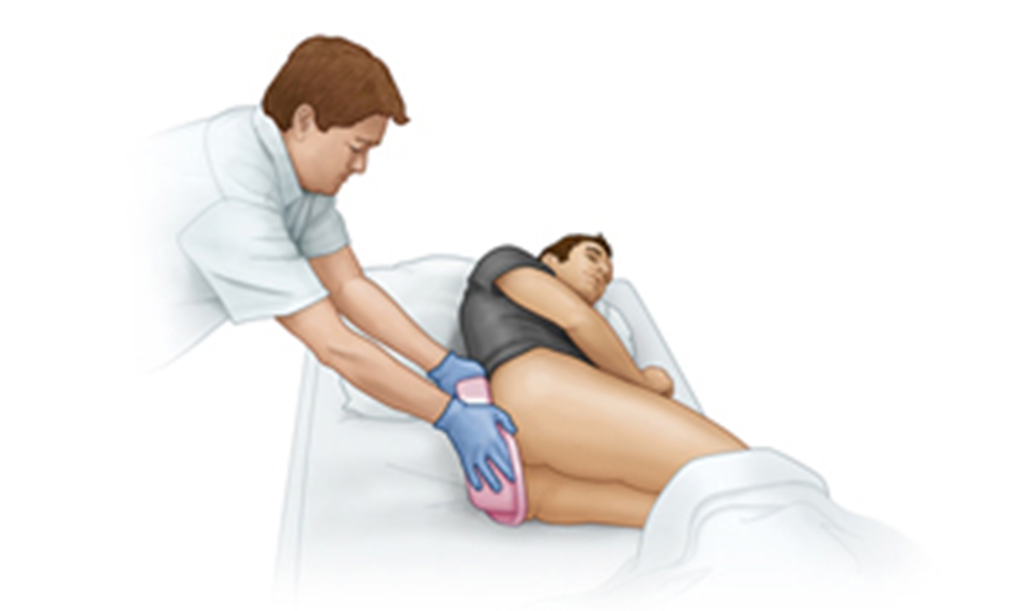While interviewing a client, the nurse records the assessment in the electronic health record. Which statement is most accurate regarding electronic documentation during an interview?
The client's comfort level is increased when the nurse breaks eye contact to type notes into the record.
Completing the electronic record during an interview is a legal obligation of the examining nurse.
The nurse has limited ability to observe nonverbal communication while entering the assessment electronically.
The interview process is enhanced with electronic documentation and allows the client to speak at a normal pace.
The Correct Answer is C
Choice A reason: This is an incorrect statement as it implies that breaking eye contact is beneficial for the client. In fact, breaking eye contact may reduce the client's trust and rapport with the nurse. The nurse should maintain eye contact as much as possible and use verbal and nonverbal cues to show active listening.
Choice B reason: This is an incorrect statement as it implies that electronic documentation is mandatory for all interviews. In fact, electronic documentation is not a legal obligation, but a preferred method of recording the assessment data. The nurse should follow the facility's policy and procedure for electronic documentation and ensure the accuracy, completeness, and confidentiality of the record.
Choice C reason: This is the correct statement as it acknowledges the challenge of electronic documentation during an interview. The nurse may miss some important nonverbal cues from the client, such as facial expressions, gestures, or posture, while typing on the computer. The nurse should balance the time spent on the computer and the time spent on the client and use open-ended questions and reflective statements to elicit more information.
Choice D reason: This is an incorrect statement as it implies that electronic documentation is beneficial for the interview process. In fact, electronic documentation may interfere with the flow and quality of the interview. The client may feel rushed or ignored by the nurse's attention to the computer. The nurse should pace the interview according to the client's needs and preferences and use electronic documentation as a tool, not a barrier.
Nursing Test Bank
Naxlex Comprehensive Predictor Exams
Related Questions
Correct Answer is C
Explanation
Choice A reason: Offering a pair of non-skid socks is not the most important action to implement next. The client may already have non-skid socks on, or may not need them if they are not walking. The priority is to prevent falls and injuries when transferring the client to the chair.
Choice B reason: Placing the chair by the bed is a necessary action to implement, but not the next one. The chair should already be by the bed before the nurse raises the head of the bed and moves the client to a sitting position. The next action is to help the client stand up and move to the chair.
Choice C reason: Supporting the client when rising is the best action to implement next. The client may be weak, dizzy, or unsteady after a week of bedrest, and may need assistance to stand up and sit down. The nurse should use proper body mechanics and a transfer belt if needed to support the client.
Choice D reason: Determining how the client feels is a relevant action to implement, but not the next one. The nurse should assess the client's vital signs, comfort, and tolerance of the activity after transferring the client to the chair. The next action is to ensure the client's safety and stability.
Correct Answer is D
Explanation
Choice A reason: Reviewing the chart for number of voids over the last 24 hours is not the best action to evaluate the client for urinary retention. It may provide some information about the client's urinary pattern, but it does not indicate the amount of urine left in the bladder after voiding.
Choice B reason: Palpating the suprapubic region for distention is a useful action to assess the client for urinary retention, but it is not the most accurate or reliable method. It may be difficult to palpate the bladder if the client is obese, has abdominal pain, or has bowel distention.
Choice C reason: Evaluating the client for urinary incontinence is not relevant to the assessment of urinary retention. Urinary incontinence is the involuntary loss of urine, while urinary retention is the inability to empty the bladder completely.
Choice D reason: Scanning the client's bladder after voiding is the best action to evaluate the client for urinary retention. It is a noninvasive and precise technique that measures the post-void residual urine volume. A normal post-void residual is less than 50 mL, while a high post-void residual indicates urinary retention.

Whether you are a student looking to ace your exams or a practicing nurse seeking to enhance your expertise , our nursing education contents will empower you with the confidence and competence to make a difference in the lives of patients and become a respected leader in the healthcare field.
Visit Naxlex, invest in your future and unlock endless possibilities with our unparalleled nursing education contents today
Report Wrong Answer on the Current Question
Do you disagree with the answer? If yes, what is your expected answer? Explain.
Kindly be descriptive with the issue you are facing.
